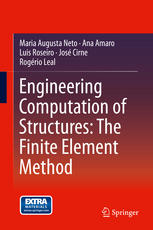

Most ebook files are in PDF format, so you can easily read them using various software such as Foxit Reader or directly on the Google Chrome browser.
Some ebook files are released by publishers in other formats such as .awz, .mobi, .epub, .fb2, etc. You may need to install specific software to read these formats on mobile/PC, such as Calibre.
Please read the tutorial at this link: https://ebookbell.com/faq
We offer FREE conversion to the popular formats you request; however, this may take some time. Therefore, right after payment, please email us, and we will try to provide the service as quickly as possible.
For some exceptional file formats or broken links (if any), please refrain from opening any disputes. Instead, email us first, and we will try to assist within a maximum of 6 hours.
EbookBell Team

4.4
92 reviewsThis book presents theories and the main useful techniques of the Finite Element Method (FEM), with an introduction to FEM and many case studies of its use in engineering practice. It supports engineers and students to solve primarily linear problems in mechanical engineering, with a main focus on static and dynamic structural problems.
Readers of this text are encouraged to discover the proper relationship between theory and practice, within the finite element method: Practice without theory is blind, but theory without practice is sterile.
Beginning with elasticity basic concepts and the classical theories of stressed materials, the work goes on to apply the relationship between forces, displacements, stresses and strains on the process of modeling, simulating and designing engineered technical systems. Chapters discuss the finite element equations for static, eigenvalue analysis, as well as transient analyses.
Students and practitioners using commercial FEM software will find this book very helpful. It uses straightforward examples to demonstrate a complete and detailed finite element procedure, emphasizing the differences between exact and numerical procedures.